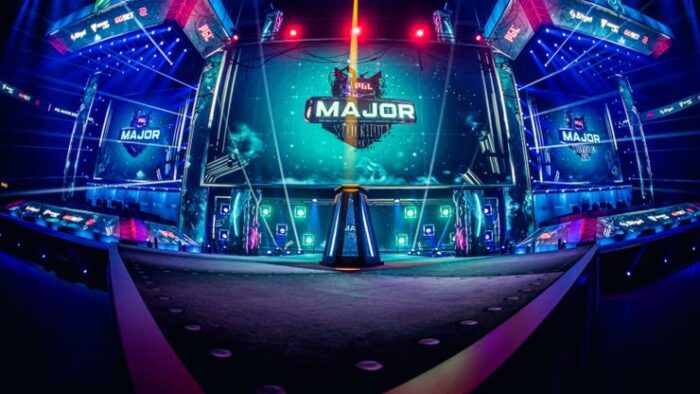
How Do CS:GO Tournaments Work?
Counter-Strike is one of the most popular Esports games in the world. For more than 20 years, it has been a mainstage game and has set the benchmark for all other competitive shooters. It provides some of the most profitable prospects in Esports due to year-round events.
While other games regard the arranged LAN tournament as a significant accomplishment, CS:GO gathers world Esports grandmasters around it monthly. Millions of dollars and even pure gold are used as CS:GO tournament prizes.
Types of CS:GO Tournaments
Tournaments in CS:GO are organized in a variety of formats. Most of them are linked together, although several are independent of the main event bracket.
Intel Extreme Masters

The IEM is the world’s longest-running pro gaming series, celebrating its 15th anniversary in 2024. It predates Counter-Strike 1.6 and even Global Offensive. ESL, a leading Esports firm, has recently established itself in Europe and wishes to expand into North America and other regions to build worldwide competition. Today, IEM is regarded as the most prominent CS:GO tournament series.
IEM pioneered the idea of organizing large qualifying events before the final championship. Qualifiers occur in major cities worldwide, including Europe, North America, Asia, and Oceania. Some of these have prize pools of over $100,000. The number of qualifiers varies, although there has been a rise in events in new regions such as CIS and South America in the last two seasons. Every year, the World Championship is held in Katowice, Poland, towards the start of spring. Three of the previous four World Championship events had $1 million or more prize pools.
Many teams have been named IEM World Champions, but only a few have become illustrious members of the circuit’s history. Fnatic and Natus Vincere own three World Championship trophies each, including back-to-back titles for Na’Vi in 2010 and 2011. With two world titles, Astralis is the only other team to have done so. FaZe Clan were named winner barely over a month ago at IEM XVI Katowice.
Cycle tournaments
These are regular CS:GO events that do not occur as part of a Minor or Major competition. It is, for example, the BLAST Pro Series event. These events take place offline in Esports arenas in front of thousands of people.
Such events can have a variety of structures, but the most common is a double-elimination system with BO1 and BO3 match formats. From a spectacle standpoint, these tournaments are the best.
Organizers usually send out direct invitations to top-tier teams. The remaining open and closed qualification slots are being filled via online qualifiers.
ESL Pro League

ESL organizes the IEM tournament circuit. The ESL Pro League functions more like a traditional sporting event. Since 2024, all teams have been pooled together from beginning to end. Teams without permanent members are recruited through qualifier events or their ESL world ranking.
Major Tournament

Winning the CSGO Major Tournament is every pro player’s desire and every Esports organization’s goal. Majors have set dates, and their prize pools are substantially larger than other tournaments. Teams can gain entry to a Major through direct invitation or minors.
Major events provide the most incredible rating points, and teams become well-known due to their participation. Furthermore, such tournaments appeal to regular players too because souvenir chests fall during the Major.
Minor CS:GO Tournaments

These tournaments provide entry into major Esports competitions for teams ranked outside of the top ten from across the world. Minor tournaments do not have large prize pools, but they provide the opportunity to compete in a Major event with a $1 million prize pool. Every region has its own Minor, and the best teams compete in the year’s main event, the Major.
PGL Major

PGL, founded in 2002, has grown from a small esports firm to an industry behemoth. They were well-known for hosting the Minor Championships and collaborating with HTC on 1v1 and 2v2 tournaments. PGL Major Krakow was a huge step forward for PGL in 2017. Valve officially sponsored the tournament, which had a $1 million prize pool, considerably exceeding any last tournament they had arranged. The next PGL Majors would continue to be sponsored by Valve as “CS:GO Major Championship” tournaments.
Fortunately for fans, the PGL Majors no longer follow a four-year cycle. Four Regional Major Ranking tournaments will precede the main event at PGL Major Antwerp 2024.
PGL Majors use a one-of-a-kind tournament format. Before reaching the knockout level, teams must compete in two Swiss group stages. In the Swiss form, winning three matches is essential to advance, while losing three eliminates teams. Only eight of the 24 teams qualify for the single-elimination playoff bracket. Teams are chosen based on their Regional Major Ranking, which aggregates results from all major CS:GO tournament series.
Types of Matches in CS:GO Tournaments

Another thing you should be aware of, especially if you want to place bets on CS:GO tournaments, is the match format, which you can check at websites like Rivalry. There are 3 main type of matches in CS:GO; BO1, BO3, and BO5.
BO1
This CSGO match format is the most “random.” Teams ban maps before playing the last one that remains unbanned. Regular tournaments, qualifications, and the BLAST Pro Series use this format.
BO3
It is the most widely used tournament format. Teams compete until they have two victories, and they can also ban and pick desired maps one by one. This format is used for all major events and playoff brackets.
BO5
This three-win scenario is uncommon. Teams do not play it during group stages, and some tournament finals use the BO5 format. They are the most time-consuming matches. It can last anywhere from 3 to 7 or even 8 hours.
